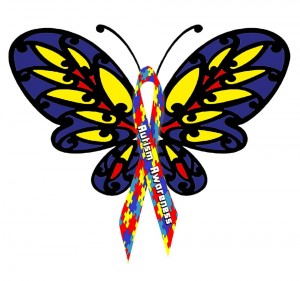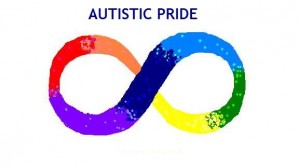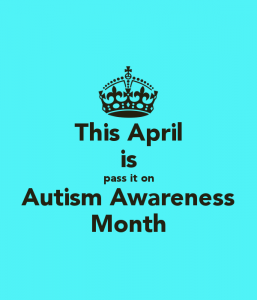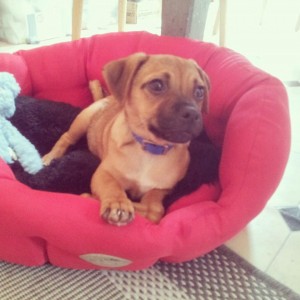
Autism Awareness Butterfly
It’s not just about your child being picked last for the kickball game or not making new friends at school, it’s about the derogatory comments towards your child from other children or the lack of empathy from the adults in his/her life. Finding the right tools to help your child with Asperger’s and Autism Spectrum Disorder and educating those who interact with your child, will help lead you all down a path towards a bright future for your child.
We have look at initiative around bullying before so we are delighted to share this guest post from Pamela DeLoatch. You can read the original here. A free tool kit to download is also available at the Round Table web site.
DeLoatch is a staff editor for RTC who has contributed to nearly a dozen books including Classroom Heroes, Not Your Mother’s Hysterectomy, Chasing Hope, and an entire slate of books in production.
She writes “Janine* sat on the park bench, shivering slightly in the unexpectedly chilly late September afternoon. Luckily, she had dressed Lila and Trent right for the weather — better than she had dressed herself, she thought, looking down ruefully at her capris and t-shirt. Lila, at 11 months, sat in the stroller, shielded from the wind coming off of the lake. Dressed in jeans and a soft, hooded sweater, Lila crammed an animal cracker into her mouth and banged on her stroller bar in delight.
Trent didn’t always notice what was going on around him. Or even in front of him. He found the world inside his head more interesting than the world outside. Asperger’s Disorder, the pediatrician told Janine and her husband, David, back when it became obvious that Trent had difficulty interacting with other children. Three years later, the symptoms of Asperger’s Disorder (now categorized as Autism Spectrum Disorder in the Diagnostic and Statistical Manual of Mental Disorders-Fifth Edition) had not changed.
Janine sighed, remembering dropping Trent off at preschool, how the other kids rushed to join their friends wherever they were playing. Trent always sought out the construction toys, never seeking a playmate.
“Why don’t you go and play with Trent?” the preschool teacher would prompt one of the boys in the class. “No. I don’t want to play with him,” they’d say. Or, “He’s not my friend.” Or worse, “I don’t like him.” Janine’s heart hurt, seeing her little boy so solitary.
After the diagnosis, Trent began working with a licensed child and adolescent psychologist and joined a weekly “play group” with other children who needed help with social cues. When it was time for elementary school, he joined a mainstream classroom. Although he did well academically with the support of his teachers and the classroom aides, he still didn’t have any friends. Until recently, Trent didn’t seem to mind, but this year, as he entered second grade, things were different. Trent hadn’t complained, but then again, Trent rarely talked about his emotions. Instead, Janine noticed that when Trent was at home and was frustrated with a Lego project, he’d hit himself on the head and furiously hiss, “You’re a dork,” or “You’re so stupid,” or “That’s why nobody likes you.”
When Janine asked Trent why he said that, he ducked his head and shrugged. Was someone saying those things to him, Janine thought. Wondering if Trent’s behavior was related to school, Janine met with his teacher. The kids did tend to leave Trent out of their play, Lisa Rutherford admitted. “In my twenty-five years of experience, I’ve found it best to let the children work out their own problems,” she explained, not unkindly.
“But Trent doesn’t always know how to work out those problems — that’s a classic issue with Asperger’s!” Janine protested.
“I know it’s trite to say that boys will be boys, but frankly, it’s been said so often for a reason,” Lisa responded. “The more I push them to include Trent, the meaner they will be to him.”
Janine was at a loss. “So the answer is to do nothing if my son is being bullied or ignored?”
The teacher sighed. “Look, I don’t condone name-calling or bullying. But even when they invite Trent to join in, he doesn’t want to unless he’s in charge of the game. He always wants to play with the same toys and he hates to share. Asperger’s Disorder or not, that doesn’t make for a good experience for anybody.”
Janine left the meeting frustrated, with no solutions. She could understand why other kids didn’t like Trent’s bossiness. It was a lot to ask elementary school kids to understand a disorder she didn’t always understand herself. She just wished Trent’s behavior didn’t result in kids turning on him. How could she help her son recognize and protect himself against bullying? Did Trent even see how the other kids treated him, beyond name calling, beyond being excluded from Wall Ball on the playground? Trent had never been invited to a birthday party, and when she occasionally went to have lunch with him at school, she noticed other boys shuffled around to avoid sitting next to her son at the lunch table. It had to hurt Trent in some way. It certainly hurt Janine.
Even now as Janine glanced cross the playground at Trent again, two boys walked up to the pile of dirt Trent was building. Janine held her breath, waiting. Maybe they’ll ask to play with you. If they do, please remember to share your shovel and bucket. She could hear the two boys chuckle. That could be a good sign. Then the shorter of the two boys kicked the pile of dirt at Trent.
As Janine stood up, Trent yelled, “Hey, give that back!” He pointed to his bucket and shovel, now in the hands of the taller boy.
“You’ll have to catch me,” the boy taunted.
Trent scrambled up, red-faced. The new boys took off, running across the playground as if it were an obstacle course, with Trent awkwardly chasing from behind.
With a quick check to ensure Lila was securely buckled in the stroller, Janine pushed the stroller as she ran, trying to catch up
“Trent! Wait!”
The boys continued to dodge Trent, pausing behind the slide and swings so he could almost catch up, then running ahead again.
“That’s my stuff! You took my stuff!!” Trent shouted, loud enough that the other parents in the park looked up.
“Hey! You boys! Give my son his toys back!” Janine yelled, catching up to Trent as the boys circled the sandbox once more. She put a calming hand on Trent’s shoulder. Trent stared at the boys, fists clenched, breathing heavily.
“Brice, Daniel—give that child back his toy!” a woman sitting on a bench near the playground called tiredly. “We’re going home.”
“Stupid kid,” the taller boy mumbled as he walked close to drop the shovel and bucket at Trent’s feet. “We were just playing with you.”
“Yeah. Just playing,” the shorter one chimed in.
Trent launched himself at the boys. The taller one dodged, but Trent tackled the shorter one, knocking him into the sandbox. Janine pulled Trent off, but not before he landed two punches.
“Get your kid off of my son!” The other mother ran to the sandbox and hauled her son up. “You okay, Daniel?” she asked, brushing sand out of his hair.
Teary-eyed, Daniel nodded. His mom turned to Janine. “Your son is a bully. Daniel didn’t deserve that. You really need to get control of him.”
“Your sons started it,” Janine shot back, and then stopped, feeling childish. Looking around the playground, at the parents and children avidly watching them, Janine was exhausted.
Was this what it was going to be like for Trent? Would the only kids who interacted with him be mean to him? Would he start believing he was a “stupid kid” or a “dork” because that’s what his peers told him? How could she help him at school and at home when the difficulties associated with Asperger’s Disorder made it hard for him to read, understand, and react to social cues and situations?
She reached out to put a gentle hand on Trent’s stiff back, but stopped. He would hate to be touched right now. Turning the stroller, she said wearily, “Let’s go home.”
The truth about bullying
Unfortunately, for children with Asperger’s Disorder and Autism Spectrum Disorder, bullying can be a fairly common event. Not only are children with Asperger’s bullied frequently, recent research shows that some bullies actually use the bullied children’s emotional vulnerability against them, frequently trying to trigger meltdowns. That makes it even more imperative for parents of children with Autism Spectrum Disorder to educate themselves and acquire the understanding and tools to help their children.
Here’s what the ORP experts, both parents and professionals, suggest:
- Understand the seriousness and impact of bullying and know that it must be addressed, not ignored.
- Observe your child’s behavior. Is he reluctant to go to school, does he avoid certain classes, or complain of frequent headaches and stomachaches? Does he have bruising or cuts? Is she missing personal items? Does he act like a bully toward younger siblings?
- “Check in” with your child. Ask your child if anyone is being mean to them and if so, what is happening and how it is affecting them. Reassure them that you want to help and just want to make sure they are okay.
- Help your child practice assertive responses such as “I want you to stop doing that,” “I want you to leave me alone,” and to also be ready to go to an adult as the next step if this doesn’t work. Inform the school of your concerns. Many schools have improved “anti-bullying” programs and want to be informed of bullying incidents. Work with teachers and school administrators to develop a plan for your child to get additional support.
- Involve your child in peer support groups and additional therapeutic groups directed to help kids with Autism Spectrum Disorder build social skills, improve self-esteem, and foster increased self-efficacy.
- Involve your child in extracurricular activities with peers who have similar interests to develop more potential friendships and beneficial social interactions.
Unfortunately, bullying is a fact of life for many kids, not just for those with Asperger’s Disorder or Autism Spectrum Disorder. But there is good news: you and your child are not alone. And, with a willingness to help, a commitment to open communication, and a few new tools – you can help them develop the skills to negate bullying and build positive relationships.
*Names have been changed to protect the privacy of the individuals interviewed for this story.




